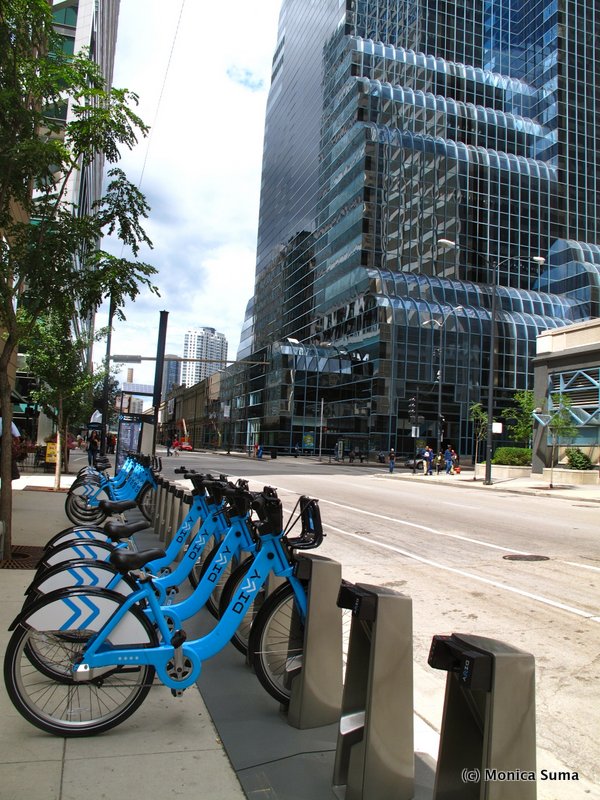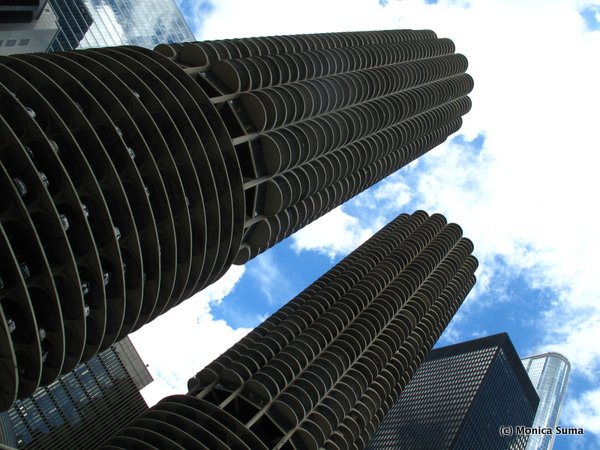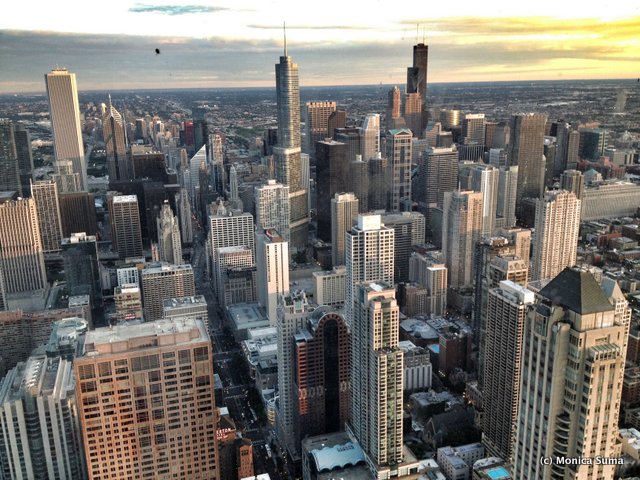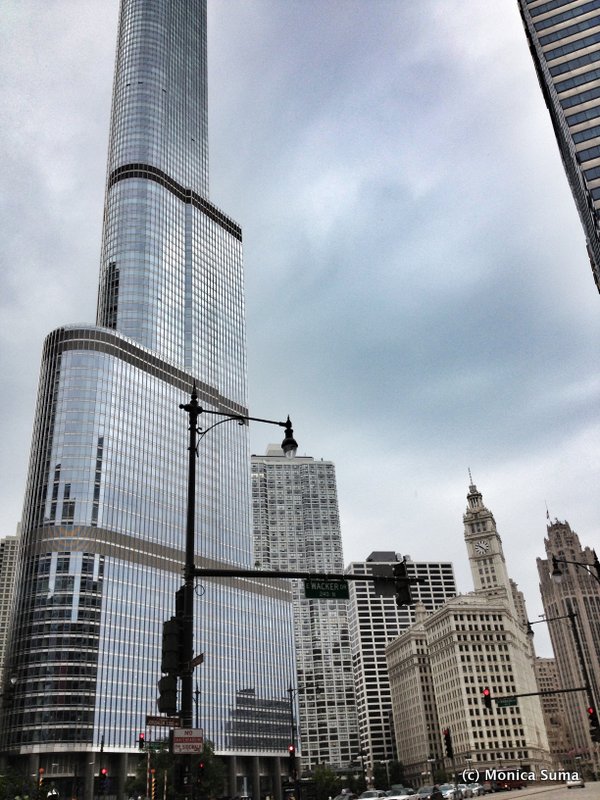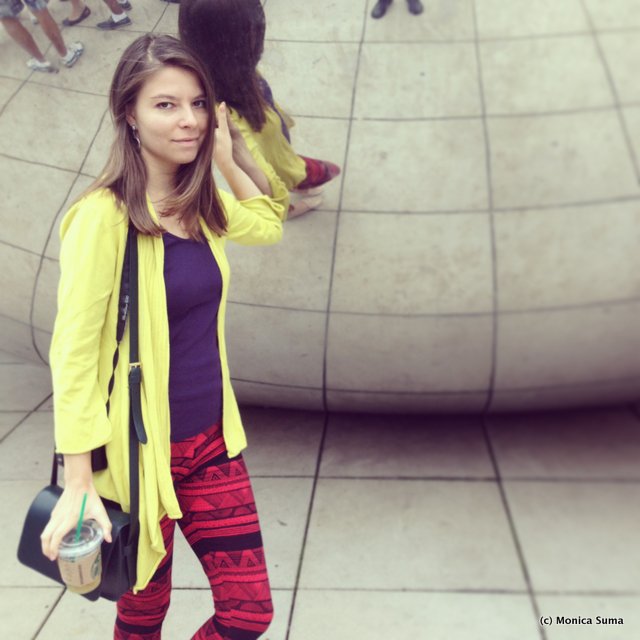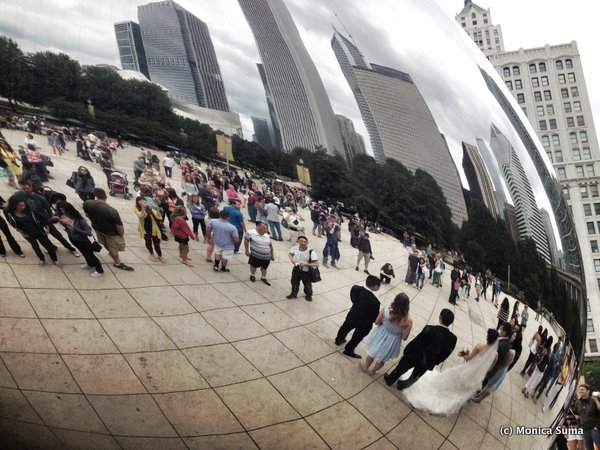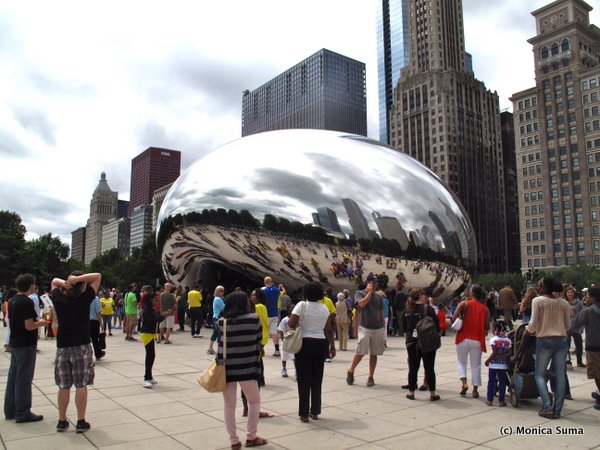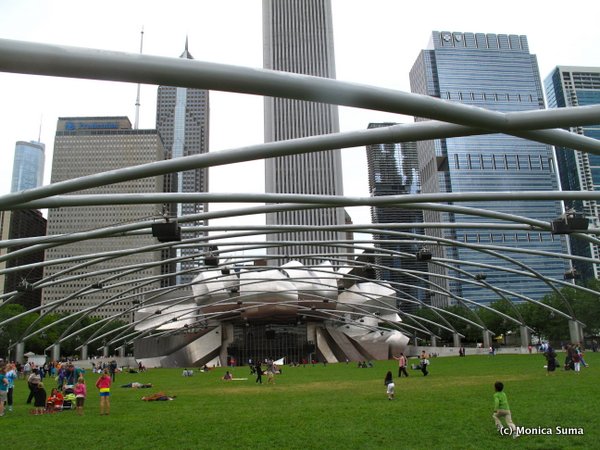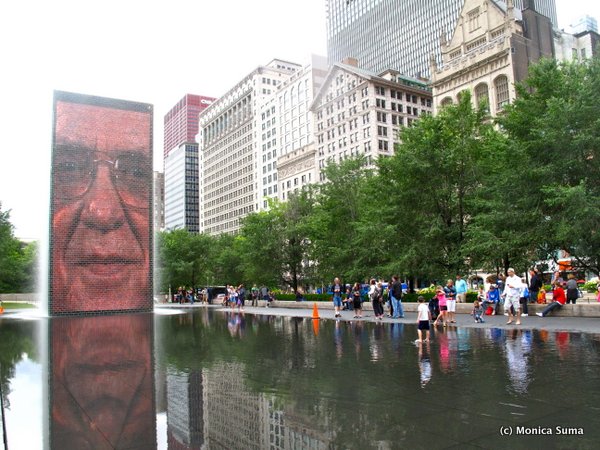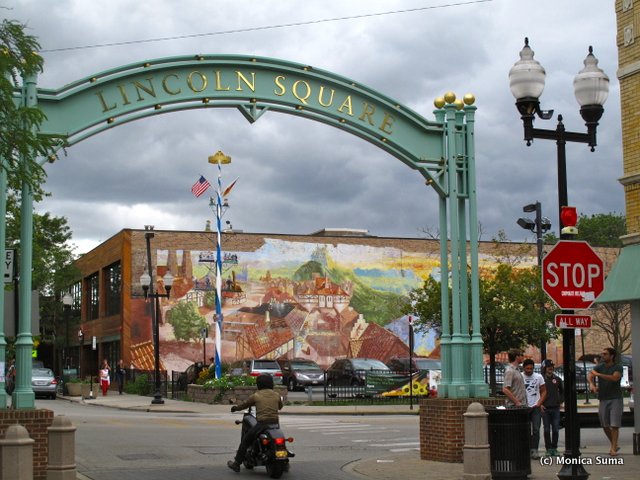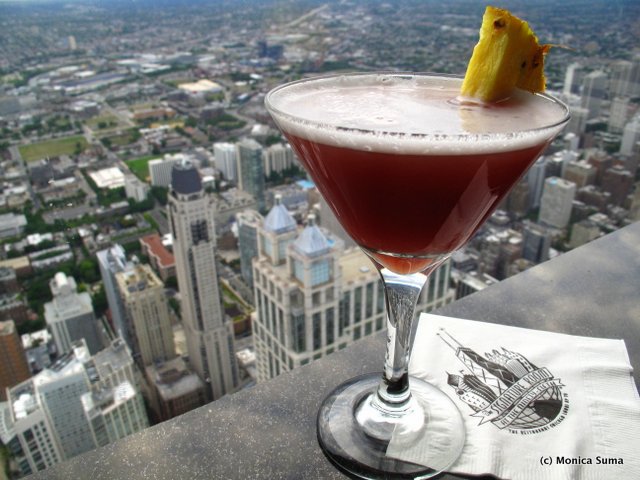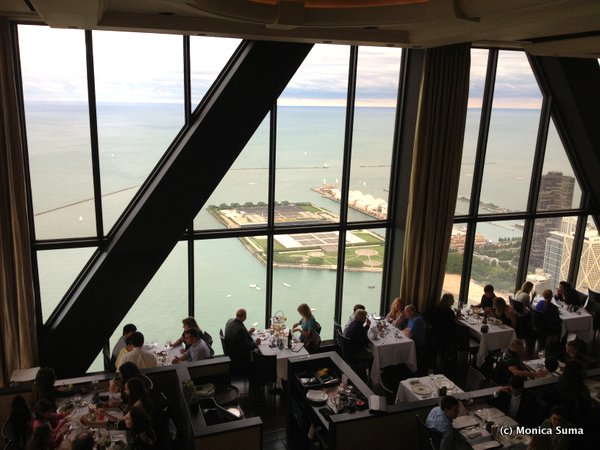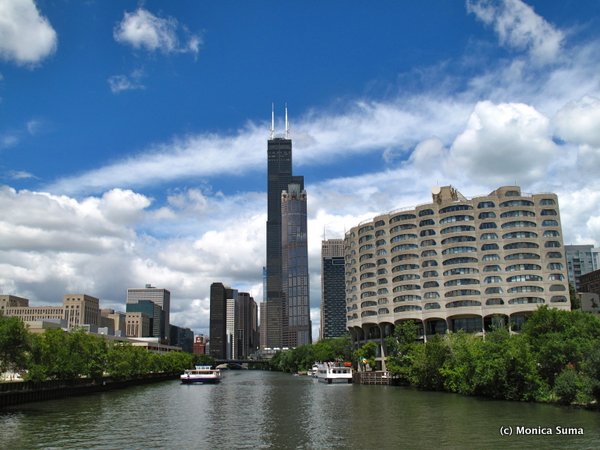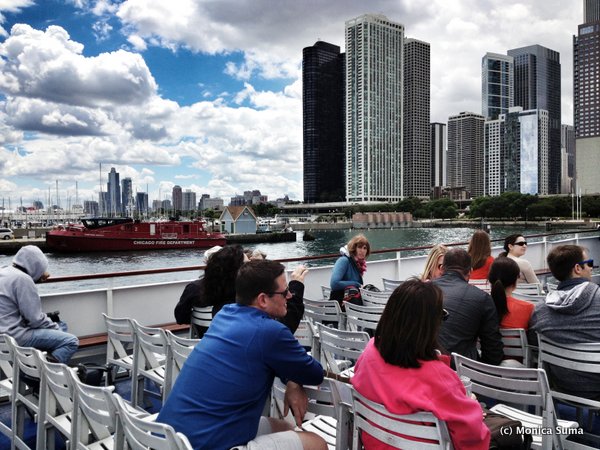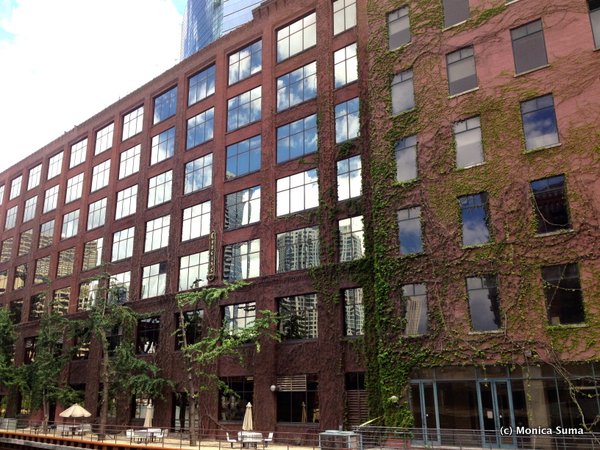They say the weather changes in Chicago every two hours. I found it to be true a few weeks ago when I spent a few days there. The Windy City certainly lives up to its name, with sunshine and cloudy skies constantly negotiating, which should dance with the winds coming off Lake Michigan. What doesn’t change however, is people’s attitude. The few days I spent there, I felt as if I was either continuously made fun of – my first thought coming from a New Yorker – or the locals are some of the nicest people in the United States. They certainly were at Hotel Felix.
“Where are you from?” The cab drives asks as I hop on and close the door.
“New York, Sir. But originally from Romania.”
“Oh, New York … You’re not nice over there. You look at people with hatred, as if we’re bothering you if we stop you for a question.”
“You’re right, we do. There are too many people and we’re constantly in a rush. It’s simply not possible to be nice to everyone. “
“I guess, you’re right; it’s a big city.”
As I get off, and head my way to the Willis Tower, I plan my day wisely to rediscover the city that intrigued me five years ago.
Depending on how much time you have in the city, you can start with a free Chicago tour. Go on a free 2-4 hour guided visit, customized based on your interests, as long as you register 10 business days in advance. Or you can go on an InstaGreeter, offered for an hour only on weekends, no registration required.
Since most buildings within the downtown area were destroyed by the Great Chicago Fire of 1871 – the most famous exception being the stone Water Tower – Chicago’s architecture is most known for its originality rather than its antiquity. Instead of lamenting the virtual loss of its cityscape, the city seized the opportunity to rebuild bigger and better than before, giving canvas for several architects and urban planners who would go on to become legends of modern architecture. Beginning with the early 1880s, architectural pioneers of the Chicago School explored steel-frame construction and the use of large areas of plate glass, Chicago thus becoming the birthplace of the skyscraper.
At the peak of its rebirth and the height of its newfound powers, Chicago became known as The White City. Chicago is also known as The Second City, which refers to its rebuilding after the fire. The nickname has stuck as Chicago had long-held the position of the nation’s second-largest city. However, perhaps the most representative moniker Chicago goes by is the city of neighborhoods.
Award-winning skyline
With an array of architectural styles and some of the world’s most noteworthy skyscrapers, it’s not hard to understand why Travel & Leisure named Chicago No. 1 in innovative architecture. From the art deco Merchandise Mart to the neo-Gothic Tribune Tower, the city’s iconic buildings are best seen by foot in Chicago’s downtown area called The Loop.
You can start exploring from the world-known Magnificent Mile, which as a New Yorker, I can’t not compare it to its counterpart Fifth Avenue. Passing by the legendary Drake Hotel and its unmatched elegance and historic acclaim, you continue on the luxury-laced stretch housing Louis Vuitton, Prada, Burberry and many of its kind.
Snap pictures at Millennium Park
Once you reach the Chicago Riverwalk, you cross the bridge and continue straight unto the direction of Lake Michigan. On the left side is perhaps Chicago’s most intriguing urban park with structures so mind boggling, your camera will be soon screaming for battery.
The silver “Bean” is where you will undoubtedly spend most of your time in the park. Literally shaped as a bean, the reflections of Chicago’s skyline into Anish Kapoor’s Cloud Gate call for some creative pictures. Have fun with it, everyone else does!
Right behind it is the ground breaking Jay Pritzker Pavilion, designed by famed architect Frank Gehry. Home of the Grant Park Symphony Orchestra and Chorus and the Grant Park Music Festival, the performance venue was designed with a large fixed seating area, a Great Lawn, a trellis network to support the sound system – replicating an indoors concert hall sound experience – and a signature Gehry stainless steel headdress.
You can hardly pass the pavilion without stumbling onto a free concert series. And for this Labor Day weekend extravaganza, the Chicago Jazz Festival (August 29 – September 1) is taking over with nearly 50 live sets over the duration of four days (PS – Many of Chicago’s jazz clubs keep the music going with late-night jam sessions well after the park clears out).
Also in Millennium Park is Crown Fountain’s reflecting pool. Designed by Catalan artist Jaume Plensa and executed by Krueck and Sexton Architects, the fountain is composed of a black granite reflecting pool placed between a pair of glass brick towers. The 50 feet (15.2 m) tall towers use LEDs to display digital videos of Chicago’s citizen’s faces. Depending on the weather, the water operates from May to October, intermittently erupting from a jet on each tower’s front face.
Explore Lincoln Square
After this session of modern landscape, I wanted to balance things out with an older neighborhood. And luckily for me, I met Pola from Jetting Around, a Chicagoan that kindly gave me tips on which neighborhoods are richest with unique architecture.
When I mentioned my love for older houses on whimsical, quaint alleys, she knew exactly where to take me. As we slowly drove into Lincoln Square, the spirit of the German culture was proudly on display on art murals, cafes and restaurants. In fact, the square is today also home to several European spots, including the legendary Julius Meinl Austrian café.
Hancock Building versus The Ledge
Following Lincoln Square, I headed back to Michigan Avenue to go on top of the Hancock Building, and its spectacular Signature Lounge.
If you want to see Chicago skyline views from above, without the 2-hour wait from the Willis Tower, then this is your best bet. Take the elevator to the 96th floor for a bar seat, a cocktail and sweeping views of the Windy City.
For a proper dinner, make reservations ahead at the Signature Room. Both have spectacular views and reasonable wait times to be seated. It’s free, apart from the food and drinks you will be having. The best time to snap pictures is at dusk, when the sun is setting!
The world-famous Ledge from Willis Tower is certainly a highlight to any Chicago trip. Dangling from the 103rd floor of the tallest building in the western hemisphere (and the third tallest in the world) is nothing short of exhilarating. The problem is the long wait to purchase tickets and get upstairs, which is why for those of you with limited time, stick to the Hancock Center.
Take a boat tour: Architecturally Chicago
Besides the urban design, the skyline views and the neighborhood walks, I knew witnessing Chicago’s architecture up-close from a boat would be a must-do.
Sailing past soaring skyscrapers and gliding beneath iron bridges, while basking under the Chicago sunshine made for a perfect afternoon on Wendella Sightseeing. Starting at the Wendella Dock at Trump Tower, an expert architecture guide leads the way through all three branches of the Chicago River during a 75 minute tour, highlighting Chicago’s rich architectural heritage.
From residential to office buildings, you’ll learn about a wide range of architectural styles designed by notable architects such as Mies van der Rohe; Bertrand Goldberg and Skidmore, Owings and Merrill. Add to that the strong chocolate smell and your afternoon simply can’t get better.
The pricier Chicago First Lady (the official vessel of the Chicago Architecture Foundation) is also a good option.
Visit Oak Park
I never made it to the west-side community of Oak Park, but the home of artistic geniuses Ernest Hemingway and Frank Lloyd Wright is a cultural tour worth taking.
Going inside Hemingway’s house, you can go through rarely seen photos, childhood diaries as well as his early writings. Perhaps you’ll reveal the secret as to why a young boy with a simple diary came to be a Nobel Prize-winning icon.
At Wright’s private home & residence, where he spent the first 20 years of his career, you can marvel at his numerous designed homes.
So, next time you hear of Chicago as the Windy City, think again, for it is in fact the city of architectural innovation, including a whopping 77 neighborhood communities.

